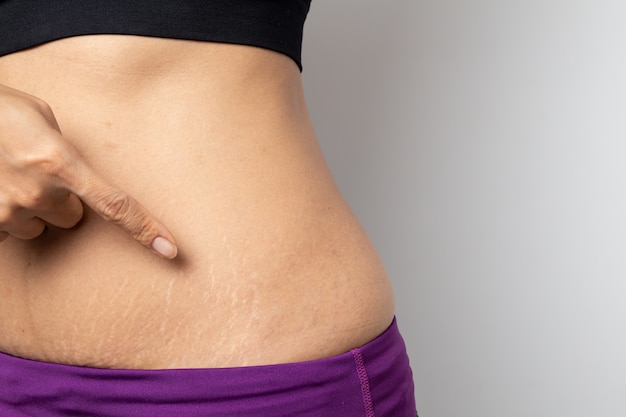
Contents
Introduction:
Stretch marks are a common skin condition that affects people of all ages and genders. They often occur due to rapid growth, weight gain or loss, hormonal changes, or pregnancy. While they are a natural part of the body’s transformation, stretch marks can have a significant emotional impact on individuals. In this article, we will explore the societal perception of stretch marks and the importance of promoting self-acceptance.
- The Stigma Surrounding Stretch Marks: Stretch marks have long been stigmatized in our society, primarily due to unrealistic beauty standards perpetuated by media and advertising. The pressure to have flawless, blemish-free skin can create feelings of insecurity and self-consciousness for those with stretch marks. The societal perception that stretch marks are undesirable can lead to body dissatisfaction and a negative self-image.
- Emotional Impact on Individuals: The presence of stretch marks can have a profound emotional impact on individuals, affecting their mental well-being and self-esteem. Many people feel ashamed or embarrassed about their stretch marks, leading to anxiety, depression, and social withdrawal. The emotional distress can be particularly challenging during situations that require exposing one’s body, such as going to the beach or engaging in intimate relationships.
- Challenging Society’s Perception: To address the emotional impact of stretch marks, it is essential to challenge society’s perception and redefine beauty standards. Recognizing that stretch marks are a natural and common occurrence can help normalize their presence. By promoting diversity in body types and showcasing real, unedited images in the media, we can encourage a more inclusive and accepting society.
- Education and Awareness: Increasing awareness about stretch marks is crucial in dispelling myths and misconceptions surrounding them. Providing accurate information about their causes, prevention, and treatment options can empower individuals to make informed decisions about their bodies. Educational campaigns, social media influencers, and healthcare professionals can play a significant role in spreading awareness and promoting self-acceptance.
- Promoting Self-Acceptance: Promoting self-acceptance is essential for individuals with stretch marks to develop a positive body image. Encouraging self-care practices, such as engaging in activities that boost self-confidence and practicing self-love, can help individuals embrace their bodies and appreciate their uniqueness. Engaging in positive self-talk and surrounding oneself with a supportive community can also aid in building resilience and combating negative emotions.
- Embracing Diversity: Embracing diversity is a fundamental aspect of promoting self-acceptance and challenging societal perceptions of beauty. Celebrating different body types, skin tones, and experiences can foster a more inclusive environment where everyone feels valued and accepted. By showcasing diverse representations in the media and fashion industries, we can inspire individuals to embrace their own bodies and appreciate the beauty in others.
Conclusion:
Understanding the emotional impact of stretch marks and addressing society’s perception is crucial for promoting self-acceptance. By challenging beauty standards, increasing awareness, and embracing diversity, we can create a more inclusive society where individuals feel confident and comfortable in their own skin. It is essential to foster a culture of acceptance, self-love, and resilience, ensuring that stretch marks are no longer a source of shame or insecurity but are recognized as a natural part of the human experience.

